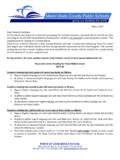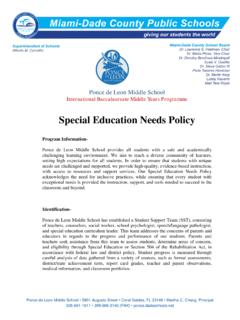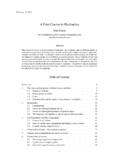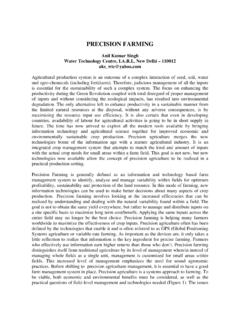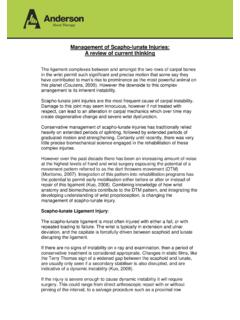Transcription of 7th Grade Summer Instructional Packet - Miami, …
1 Ponce de Leon Middle School 7th grade summer instructional packet DIRECTIONS: 1. You are required to complete the Summer Instructional Packet . 2. Turn in your completed package to your teacher, when you return to school in August. Name: _____ Date: ____ Science Teacher: _____ 7th Grade Ponce Science '14 Summer Instructional Package Completion: Complete each statement. 1. In the process of natural selection, the organisms that are best suited to their environments are most likely to survive and _____. 2. Natural selection is affected by _____, or traits that are different in members of the same species. 3. The only traits that can be acted upon by natural selection are those that are controlled by _____.
2 4. A new _____ can form when a group of individuals become isolated from the main group. 5. The actions of animals most commonly can cause the type of weathering known as _____. 6. Some plants produce acids that result in _____ weathering. 7. Features of topography, such as the Columbia Plateau and Mount Hood, are called _____. 8. The vast, flat or gently rolling grassland in the interior of North America is called the _____. 9. The force that moves sediment in a landslide or mudflow is _____. 10. Plant leaves may form a fossil called a(n) _____, a thin layer of carbon on rock. 11. Scientists know how groups of animals changed over time by studying information contained in the _____.
3 12. Paleontologists are scientists who study _____. 13. A(n) _____ is a gap in the geologic record where some rock layers have been lost because of erosion. 14. About billion years ago, the first organisms that could use energy from sunlight released _____ into the atmosphere. 15. The energy from the sun that warms your face is transferred by a process called _____. 16. An igneous rock that is formed from lava is called a(n) _____ rock. Name: _____ Date: ____ Science Teacher: _____ 17. During the 1800s, the igneous rock called _____ was widely used in the United States to build bridges and public buildings. 18.
4 Foliated and nonfoliated are terms used to describe the texture of _____ rocks. 19. Dissolved minerals and particles of sediment stick together to form sedimentary rock in a process called _____. 20. Sediment settles out of moving water by the process of _____. 21. The carrying away of rock fragments by water, wind, or ice is called _____, an important process in the formation of sedimentary rocks. 22. Power is the rate at which _____ is transferred from one object to another. 23. Work is the transfer of _____ from one object to another. 24. If the velocity of an object is doubled, its kinetic energy is multiplied by _____.
5 25. A baseball flying through the air has _____ energy because of its motion. 26. A change in an object s position relative to a reference point is called _____. 27. Acceleration is the rate of change in _____. 28. A golf ball _____ when either its speed or direction changes. 29. Plants make their own food using energy that comes from the _____. 30. Small openings called _____ allow carbon dioxide to enter a leaf. 31. Chloroplasts contain a pigment called _____ that captures the energy in light. 32. During respiration, molecules of _____ are first broken down in the cytoplasm. 33. Energy from glucose is released in the process of _____.
6 34. The main difference between respiration and fermentation is that respiration uses _____ to obtain energy from food. 35. The process in which yeast produces carbon dioxide and alcohol is called _____ fermentation. Name: _____ Date: ____ Science Teacher: _____ 36. The main difference between cellular respiration and fermentation is that cellular respiration uses _____ to obtain energy from food. 37. The process in which yeasts break down sugars and produce carbon dioxide and alcohol is called _____ fermentation. 38. Water vapor turns into droplets of liquid water in the process of _____. 39. Certain bacteria change nitrogen gas into a usable form in a process called _____.
7 40. Producers use carbon from the gas _____ to make sugars and starches. 41. The genetic code is found in the order of nitrogen _____ along a gene. 42. In pea plants, the tall-stem allele and the short-stem allele are different forms of the same _____. 43. If D represents the dominant allele of a gene, then _____ represents the recessive allele. 44. If a(n) _____ allele is present, its trait will appear in the organism. 45. If each of ten events is equally likely to occur, the probability of each individual event occurring is _____ percent. 46. In a cross between two hybrid Tt pea plants, _____ percent of the offspring will be Tt.
8 47. If all of the sex cells of an organism have the T allele, the genotype of that organism must be _____. 48. A carrier of a trait controlled by a _____ allele does not express the trait. 49. A(n) _____ is used to track the occurrence of a trait in a family. 50. A(n)_____ helps couples understand their chances of having a child with a genetic disorder. 51. Strip mining is a process used to collect _____close to Earth's surface. 52. A radioactive gas that is naturally formed by certain types of rocks underground is called _____. 53. A ridge of land that separates two watersheds is called a(n) _____. Name: _____ Date: ____ Science Teacher: _____ 54.
9 Over many years, the levels of nutrients in a lake build up in the process of _____. 55. The area of soil in which the pores are totally filled with water is called the _____ zone. 56. People cannot use most of the freshwater on Earth because it is in the form of _____. 57. People may not have enough water during a(n) _____, a period when rainfall is below normal. 58. Filters and settling tanks remove solid materials from wastewater during the _____ treatment step. 59. Wetlands help prevent _____ by absorbing runoff from heavy rains. 60. The hypothesis of _____ was that all the continents once were joined as a single supercontinent and have since drifted apart.
10 61. The process of _____ continually adds new crust to the ocean floor along both sides of the mid-ocean ridge. 62. Subduction occurs where the oceanic crust bends down toward the mantle at a(n) _____. 63. A continental plate collides with an oceanic plate at a(n) _____ boundary. 64. In the phenomenon known as the _____ effect, electric current will flow when light shines on certain substances. 65. When white light from the sun is refracted by rain drops, a _____can result. 66. As parallel rays of light pass through a(n) _____ lens, they are bent toward the center of the lens. 67. If you state that your basketball team will win tonight s game because your team has always beaten the other team in the past, you are making a(n) _____.

